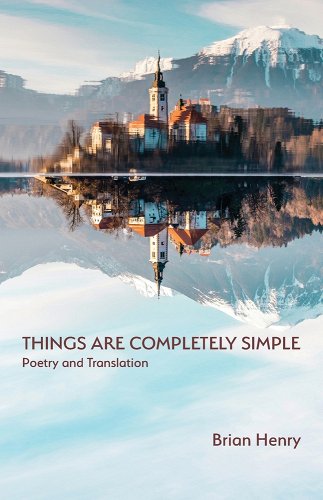Since April 2021, I have been translating and editing a comprehensive volume of selected poems by the Slovenian poet Tomaž Šalamun (1941-2014). Šalamun published 53 individual books of poetry, so there is plenty to choose from and plenty to translate. Reading all of his books without relying on English translations has led me to admire his work more than ever, since I’ve been able to trace the evolution of his poetry—particularly his handling of form, style, and subject matter—and to recognize the consistency of certain obsessions, techniques, and images.
I started translating Slovenian poetry in 2006, beginning with Šalamun’s Gozd in kelihi (published as Woods and Chalices by Harcourt in 2008). I had been reading his poems in English translation for over a decade, but that didn’t prepare me for having to reckon with his singular poetics, especially his approach to syntax, his handling of time, and his embrace of impossibility, paradox, and constant unpredictability. A day-long translation session would leave me feeling as if my brain had been rewired. I wrote many of the poems in my book Brother No One (Salt Publishing, 2013) during or shortly after this period, and I can see the effects of translating Šalamun in a lot of them, especially those that, like many of Šalamun’s poems, occupy the space of a sonnet while embracing lyrical mayhem.
Šalamun’s poems are full of questions, and the answers, such as they are, often veer from (or seem unaware of) the questions. Some of his early poems—most notably “Dress” and “Soldier” in his collage-driven second book The Purpose of a Cloak (1968) and “Jonah” and “Driver” in his third book Pilgrimage for Maruška (1971)—adopt an interview format. The collision of the two voices can be simultaneously unsettling, absurd, beautiful, and sad—hallmarks of Šalamun’s poetry in general.
When I first read “Jonah” and “Driver” (published as “The Difference” in The Four Questions of Melancholy) in my early twenties, I was entranced by the way the two voices interacted and by the elusiveness of some of the answers. And I was struck by the possibility that a question in a poem does not have to function like a question anywhere else, nor does the answer to the question. Despite the presence of two voices, these poems convey a sense of loneliness, as if the interactions were taking place across vast distances. This mixture inspired the first poem in my first book, Astronaut (Arc Publications, 2000/Carnegie Mellon University Press, 2002), a book with numerous dramatic monologues and no single, stable voice or perspective.
Though Šalamun would leave the interview format behind, he continued to ask many questions in his work, sometimes building poems upon a series of questions, as in the poem featured here. Although the title, “Sutra,” implies the imparting of wisdom or knowledge, Šalamun was more interested in the interplay between the questions and answers than in satisfying the expectations of a conventional sutra.
While translating Šalamun’s work, I often think of his “interview” poems, reminding myself that regular logic and predictability are seldom found in his poetry and should not be introduced by a translator. Surprise, terror and delight (often at the same time), pathos and humor (often at the same time), and outrageousness are everywhere in his work. These poems remind me that every poem, even one that sticks to a single voice, can be, like translation, a conversation, a meeting of different voices and perspectives as filtered through the poet and, later, the translator.




